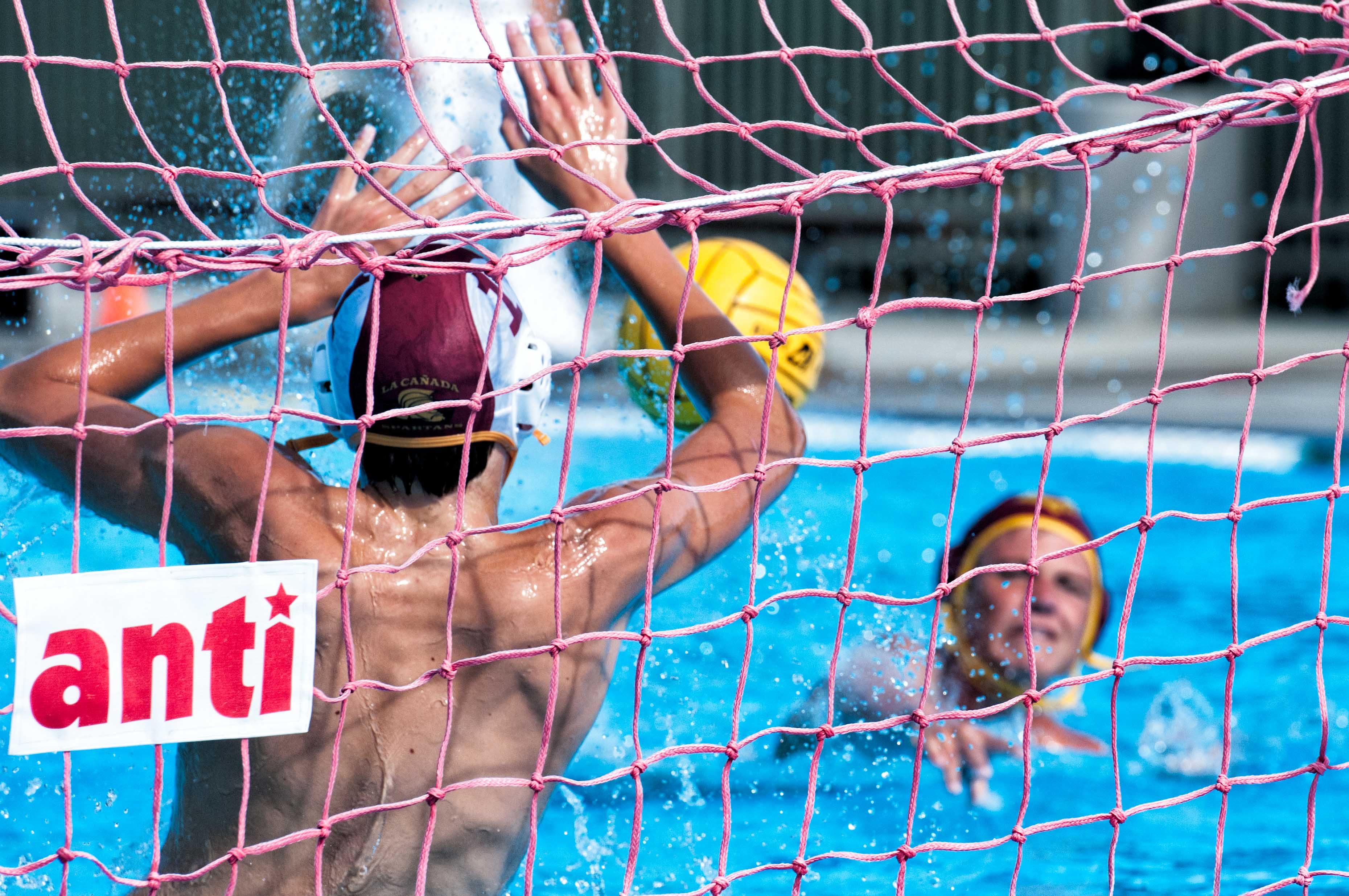How to Warm up as a Water Polo Goalie
 This is the fourth and final post in our USA Water Polo ODP series.
This is the fourth and final post in our USA Water Polo ODP series.
Playing goalie on any team requires performance skills that differ from the rest of the players, whether this takes place in the pool or on land. Water Polo is no exception, and it is vital that goalies in the sport understand how this will affect their individual approach to strength and conditioning. The best athletes have an intimate understanding of their position and its demands on the body. Let's dive into the strength exercises tailored to goalies for maximum performance in the cage.
While all players tread water, a goalie must master this skill with a focus on the neuromuscular coordination that goalie movements demand. This includes hip mobility, balance, leg explosion, and upper body strength. Goalie-specific training, including reaction-speed or fast-twitch drills, can maximize physical capability while minimizing energy output in the water. You can expect a goalie’s pre-workout routine to emphasize the lower back, hips, legs, shoulder stability, and core.
Alongside the Water Polo Olympic Development Program, we have developed a position-specific strength program geared towards water polo goalies. Let’s take a look at a few of these exercises and how they benefit the position.
Walking Spiderman
Hip mobility is crucial to a goalie’s movement in the cage. The Walking Spiderman is an exercise to improve range of motion in a chronically tight area for water polo athletes. Greater mobility allows a keeper to maintain a wider base position and push more water before a powerful lunge.
Starting Position:
Start in pushup position. Hands begin under the shoulders. Back is flat, and core tight.
Movement:
Step front foot forward to lunge position. Extend same arm forward and touch the floor.
Step back foot forward to meet front foot.
Step opposite foot forward to lunge position. Extend same arm forward and touch the floor.
Repeat for prescribed reps.
Dowel Good Morning
Posture plays a huge role when blocking the ball. The Good Morning with a dowel is a movement to help strengthen and increase range of motion in the hamstrings and lower back for goalies.
Equipment:
You will need one long dowel. Make sure the dowel is light and can be easily gripped.
Starting Position:
Feet start hip width apart, toes forward, slight bend in the knees. The dowel is resting along your spine just below the neck with your hands holding the dowel just outside shoulder width.
Movement:
Hinge at the hips with a slight bend in the knees. Push the hips back while keeping the back flat and pinching the shoulder blades together.
At the bottom, squeeze hamstrings and glute muscles to elevate your upper body back to starting position.
Front Bridge Arm Raise
Posture, core, hip and shoulder stability are all combined in this dynamic exercise. The Front Bridge Arm Raise is a variation of the regular Front Bridge, with added emphasis on stability and core strength.
Starting Position:
Start in a front bridge position with the head, shoulders, back, and glutes all aligned. Hand, forearms, elbows and toes on floor. Core is tight.
Movement:
Lift and extend one arm in front of the body while maintaining alignment.
In a controlled movement, return that arm to floor back to starting position.
Lift and extend opposite arm in front of body while maintaining alignment.
In a controlled movement, return arm to starting floor position. Repeat for prescribed reps.
Frog Squat
This bodyweight squat progression targets hip mobility and flexibility, which helps goalies improve their egg-beater base position.
Do not underestimate the importance of posture for goalies. A strong back and good range of motion along the spine can help prevent future injuries.
Starting Position:
Stand, feet hip width apart with chest up and flat back. Cross hands in front of hips.
Movement:
Lower body toward the ground, sink your hips backward; knees over toes into a squat position. Touch floor with hands while keeping your chest up.
Drive through heels and extend through hips back to the starting position. Repeat for prescribed reps.
For access to more sport-specific training, head here.
To sign up for a BridgeAthletic training program, visit our water polo page here.
To learn more about BridgeAthletic, visit our main website here.
To learn more about USA Water Polo, or USA Water Polo ODP, visit their site here.
About the Author

Nick Folker is the Co-Founder and Director of Elite Performance at BridgeAthletic. Nick’s roster of athletes includes 35 Olympians winning 22 Olympic Medals, 7 team NCAA Championships and over 170 individual and relay NCAA championships.
Related Posts

The Best Bench Press Variation You’re...
This post is part of our Coaches Corner series with Taylor Rimmer. Taylor is NSCA-CPT, StrongFirst...

Does Powerlifting Harm Heart Health?
A recent study has discovered that a 12-week supervised strength training program (SSTP) may result...
-1.png)
Barefoot Running: Is It For You? |...
Run Free: Consider Less Cushion
Updated October 2020:
With more athletes looking for ways to...

